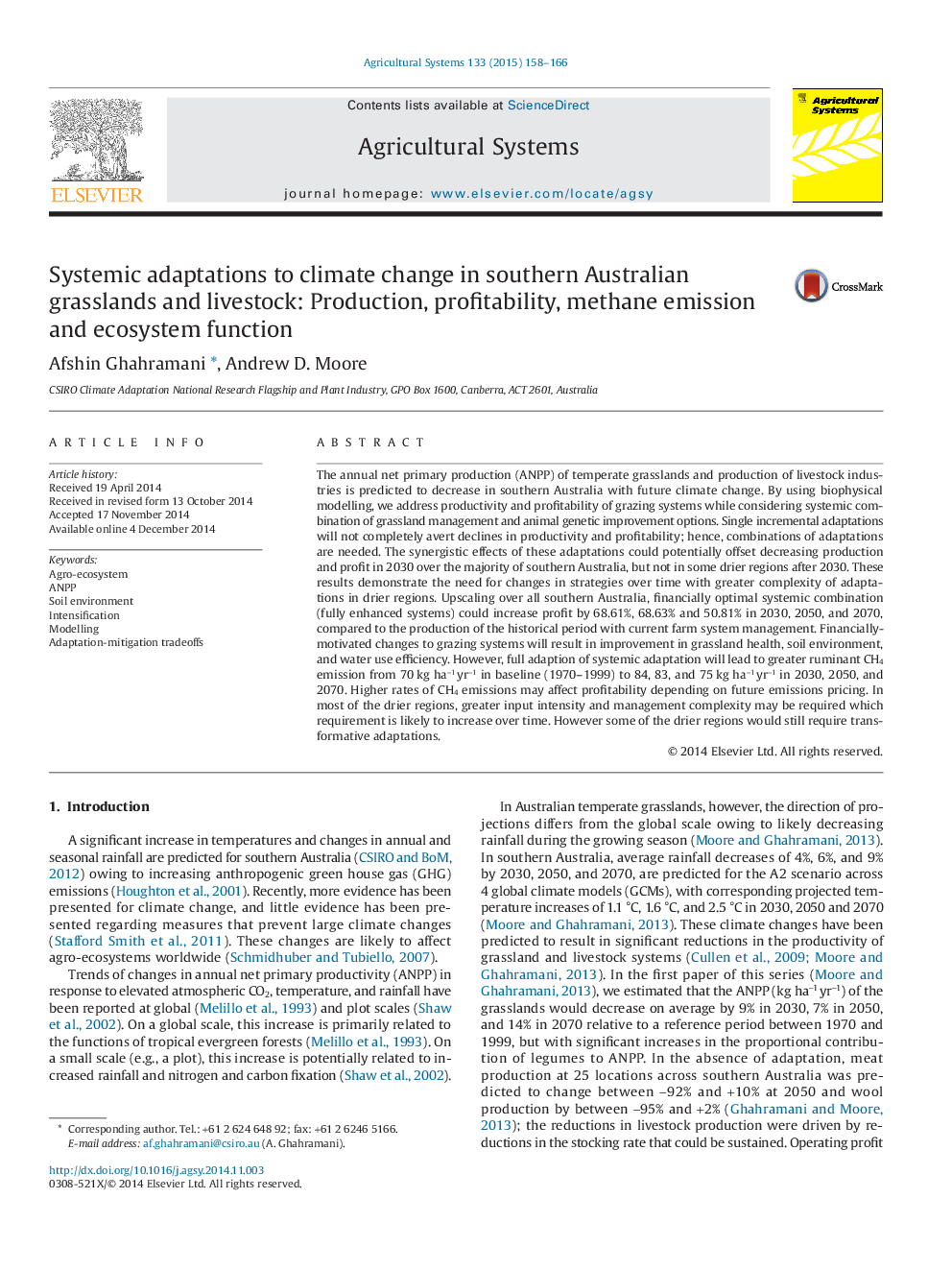| Article ID | Journal | Published Year | Pages | File Type |
|---|---|---|---|---|
| 6368631 | Agricultural Systems | 2015 | 9 Pages |
Abstract
The annual net primary production (ANPP) of temperate grasslands and production of livestock industries is predicted to decrease in southern Australia with future climate change. By using biophysical modelling, we address productivity and profitability of grazing systems while considering systemic combination of grassland management and animal genetic improvement options. Single incremental adaptations will not completely avert declines in productivity and profitability; hence, combinations of adaptations are needed. The synergistic effects of these adaptations could potentially offset decreasing production and profit in 2030 over the majority of southern Australia, but not in some drier regions after 2030. These results demonstrate the need for changes in strategies over time with greater complexity of adaptations in drier regions. Upscaling over all southern Australia, financially optimal systemic combination (fully enhanced systems) could increase profit by 68.61%, 68.63% and 50.81% in 2030, 2050, and 2070, compared to the production of the historical period with current farm system management. Financially-motivated changes to grazing systems will result in improvement in grassland health, soil environment, and water use efficiency. However, full adaption of systemic adaptation will lead to greater ruminant CH4 emission from 70âkg haâ1âyrâ1 in baseline (1970-1999) to 84, 83, and 75âkg haâ1âyrâ1 in 2030, 2050, and 2070. Higher rates of CH4 emissions may affect profitability depending on future emissions pricing. In most of the drier regions, greater input intensity and management complexity may be required which requirement is likely to increase over time. However some of the drier regions would still require transformative adaptations.
Related Topics
Life Sciences
Agricultural and Biological Sciences
Agricultural and Biological Sciences (General)
Authors
Afshin Ghahramani, Andrew D. Moore,
